第33章 THE HUMAN COSTS OF LABOUR(5)
It is upon this combination of conditions that the first count against the dominion of machinery is based.The brief physiological consideration we have brought to bear upon the problem of fatigue gives clearer significance to monotony as a 'cost'.It implies, not merely a dull and distasteful occupation, but one which, taxing continually the same muscles and the same nerve-centres, increases the poison of fatigue.Hand labour of a narrow order, or machine-tending however light, entails this heavy cost, if maintained over a long period of time.
But where monotonous repetition is closely directed by the action of a machine, as regards its manner and its pace, there is a special nervous cost.For a hand-worker, however dull or heavy is the work, retains some slight power of varying the pace and perhaps of changing his position or mode of work.A worker who either feeds a machine or adjusts his movements in obedience to those of a machine, as for instance a cutter in the clothing trade or in shoemaking, has no such liberty.The special cost here entailed is that of trying to make an organism conform in its movements to a mechanism.
Now a human being, or any other organism, has certain natural rhythms of movement for work, related to the rhythms of heart and lungs and other organic processes, and there are natural limits also to the pace at which he Can efficiently, or even possibly, continue working.A machine also has rhythms and a maximum efficiency pace.But the rhythms of a machine are determined by its mechanical construction and the apparatus which furnishes its power: they are continuously uniform, and are capable of being speeded up beyond the capacity of the human tender.
A human rhythm is really labour-saving, in as much as it eases the strain to work in accordance with a natural swing.To set a man to follow the rhythm of a machine not only loses this economy, but entails an extra effort of conformity.The tendency to speed up a machine, so as to get the most out of it, is liable to take out of the machine-tender even more than he is capable of recognising in the way of nervous strain.Where considerable muscular activity is also required in following a high pace set by a machine, an appalling burden of human costs may be accumulated in a factory day.
When to such direct human costs of labour are added the risks of industrial accident or of industrial diseases, the physical injuries involved in bad atmosphere, heat, noise and other incidental pains and inconveniences which beset many branches of industry, we begin to realise with more distinctness the meaning of 'costs of labour' in the human as distinguished from the economic sense.
Later on we shall turn to consider how far the economic or monetary 'costs' correspond with these human costs.
Our present task, however, is to conduct a brief survey of general industry in order to form some idea of the magnitude of these human costs in the leading branches of production, and to consider how far they are offset or qualified by factors of human interest or utility, such as we found widely prevalent in the work of the artistic, official, and administrative classes.
NOTES:
1.Weariness , the Rede Lecture, Cambridge, 1893.
2.Foster.Op.cit.
3.Goldmarck, Fatigue and Efficiency , p.22.
4.Goldmarck, p.22.
5.Ibid, p.23.
6.Goldmarck, p.33.
7.Goldmarck, p.37.